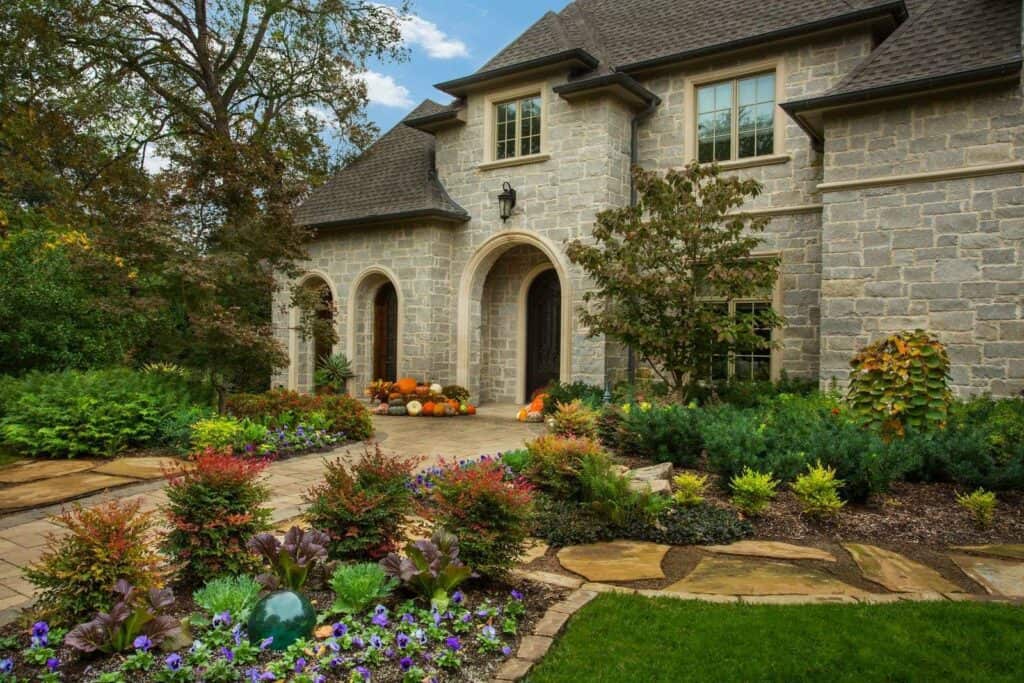How Landscape Design can Save You Time, Stress, and Money.
How Landscape Design can Save You Time, Stress, and Money.
Blog Article
The Definitive Guide to Landscape Design
Table of ContentsLandscape Design Things To Know Before You BuyLandscape Design Fundamentals ExplainedOur Landscape Design IdeasAn Unbiased View of Landscape DesignIndicators on Landscape Design You Should Know
A yard can usually be divided into three areas: public (the front lawn), personal (the back backyard), and service (generally the side lawn). The location of task locations depends largely on the type of location, the dimension of area required, the type of task, and the wanted proximity to various other tasks and frameworks.The outside wall surface of your house usually acts as the initial wall or starting factor of an outside area. Incompatible uses should be separated, and relevant activities, such as food preparation and eating, ought to be assembled to make the backyard a lot more efficient and satisfying. When making use of hardscape to create areas, use building material comparable to that made use of in your house for connection from your house into the yard.
Connected areas. Credit Report: Gail Hansen, UF/IFAS Making use of comparable hardscape functions and repeating plants draws the eye around the garden.
Getting The Landscape Design To Work

For psychological convenience plants are utilized as physical or suggested barriers for privacy and safety and security. Physical obstacles block both the sight and accessibility to an area and include fencings, walls and plant bushes.
Physical and implied obstacles. Credit Scores: Gail Hansen, UF/IFAS For these reasons, the kinds of plants to be used (such as trees, bushes, or groundcovers) need to be picked in the beginning of preparation (Landscape Design). Plant types are picked for their functional capacities to ensure that their future objective and required area can be considered at the same time

3 Easy Facts About Landscape Design Shown
Each plant mass is in front of, behind, or following to, another mass. Credit Rating: Gail Hansen, UF/IFAS Repeating plants within a mass and duplicating masses with comparable plants ties the yard with each other. The individual plant qualities must be thought about to efficiently layer and mass plants.
All plant structures start with the primary structure plants, the large, primarily evergreen background plants-such as the trees and big bushes. These plants separate or enframe spaces, control the size of the space, and give the starting point for picking the proper characteristics of the 2nd layer, midground plants, for massing and infill.
Important points in Homepage the garden must be highlighted by the use distinct plants, unique structures, or garden ornaments. Noting thresholds or entries to spaces can be performed with entrances, arbors, and actions, or via using one-of-a-kind and colorful plants. The type and/or style motif of the yard will typically aid determine the crucial points and exactly how they ought to be highlighted.
Other crucial places in the lawn are focal More hints points, which is made use of to visually arrange a designed area. Different viewpoints or perspectives can disclose various structures in the landscape that might call for a range of focal factors.
Landscape Design - An Overview

Number 13. Plant types. Credit: Gail Hansen, UF/IFAS After form, structure is the next leading function of a plant; rugged, tool and great textures can be made use of for comparison and focus in the landscape. Kind and texture both trump shade in the yard for the majority of the year. Throughout particular seasons, shade will be the most visible feature of the garden.
The enjoyable fragrance of plants, the noise of wind in the trees, the noise and structure of water, and the shades and textures of sculptures, pots and garden furniture all contribute to the experience of the garden. One detail that is commonly neglected is the effect of light on the aesthetics of the plants.

Landscape Design Things To Know Before You Get This
It is essential to recognize the ultimate mature dimension of plants so they can be put in the right area and spaced appropriately when they are set up. Providing plants room to expand is a challenge due to the fact that the common fully grown size is commonly based on optimal expanding problems and the ecological problems of a website may trigger a plant to grow larger or stay smaller.
Report this page